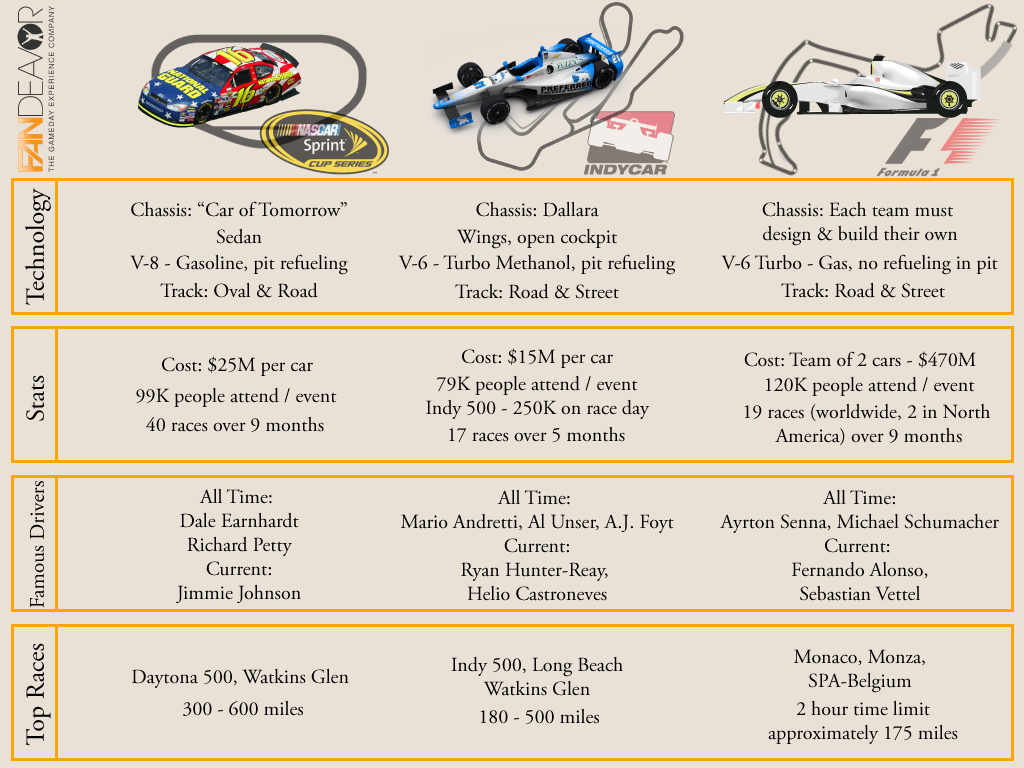The Costs of Racing in IndyCar and Formula One
High Upfront Costs but Tight Budget Constraints in IndyCar
IndyCar racing comes with significant upfront costs but aims to keep ongoing expenditures relatively low through regulations. A used IndyCar can easily cost $300,000, and additional parts, engines, tires and other necessities drive the total investment towards $1 million per entry according to interviews with team owners and articles analyzing racing budgets. However, IndyCar enforces strict cost controls through technical regulations in areas like car design, engines and parts to rein in escalating costs.
Dedicated single-source chassis and engine suppliers
All IndyCar teams must use the same chassis, a Dallara DW12, and have just two engine options from Honda or Chevrolet. This single-source approach avoids costly in-house research and developmentprograms each team would face if designing unique cars and engines from scratch. IndyCar also works closely with Dallara and the two engine manufacturers on technical specifications to promote parity and limit development wars that inflate budgets.

Multi-year car “models” to amortize investments
Unlike Formula One where teams design and build new cars each season, IndyCar has used the DW12 chassis for a decade now since its 2012 introduction. This allows teams to spread the high upfront chassis cost over many race seasons before a planned refresh. Engine technology also remains fairly stable, not requiring major redesigns annually. Together these measures help control regular capital expenditures teams must budget each year.
Limited sponsor commitments despite top-level racing
Sponsorships in IndyCar tend to be for single races or partial seasons rather than long-term full-seasonbacking seen in F1. Even successful teams and drivers like Penske and Josef Newgarden change main sponsors frequently between races. Target’s long championship-winning partnership with Ganassi was an exception. Limited sponsorship duration remains a budget challenge for IndyCar teams seeking multi-yearfinancialpredictability.
Massive Costs but also Massive Revenues in Formula One
Formula One stands in stark contrast with its lack of technical regulations, focus on in-house development and high commercial values supported by global marketing powerhouses.
Bespoke car design and manufacturing
Each F1 team designs, builds and continuously improves its unique racing car and engine throughout a season. This unrestricted innovation fuels technology progress but requires vast R&D budgets approaching $300 million annually for top teams. Manufacturers like Mercedes fully commit to achieving this edge through advanced automobile engineering programs.
Evolutionary car design seasons
New base car designs arrive every year reflecting learnings from the previous campaign. Key areas receive mid-season upgrades too. This continuous advancement demands immense recurring engineering budgets far beyond IndyCar’s planned multi-year car cycles. However, it also drives intense competition.
Mega-corporation investment and steadfast sponsors
Only the world’s largest multinationals possess the financial firepower and marketing ambitions to seriously compete in modern F1. Powerful brands like Mercedes and Petronas form decades-long partnerships, providing teams immense stable revenue that offsets astronomical costs. Major manufacturers recover expenses through advanced R&D programs, global media reach and technological spillovers.
Enormous television audiences and digital following
With a global fanbase approaching 500 million, F1 commands vast commercial opportunities. It markets teams and drivers as celebrated sports brands through constant worldwide media coverage. TV rights and sponsorship deals generate estimated $2 billion total revenues annually just for F1’s commercial rights holder. This economic scale sustains tremendous budgets throughout the competitive grid.
Choosing IndyCar or Formula One based on Personal Fit
While F1 surely provides unrivaled prestige and cutting-edge technology, its costs and technical demands restrict meaningful participation largely to government-backed nations and automotive mammoths. IndyCar remains far more financially accessible for independent passionate racers or smaller teams. Rather than money alone, personal fit with a series’ culture, rules and racing style must also factor into any driver or entrepreneur’s decision on committing to open-wheel racing at the highest professional levels. Both IndyCar and F1 excite fans with thrilling wheel-to-wheel action and serve as proving grounds for talented pilots, engineers and innovators - just through differing competitive models and scales of commerce.
